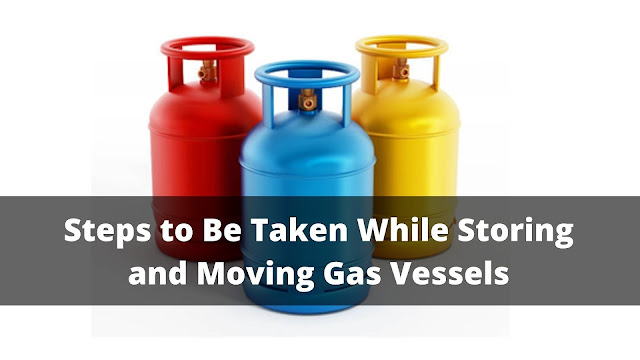Steps to Be Taken While Storing and Moving Gas Vessels
Compressed gases like LPG can be flammable, toxic, corrosive, oxidizing, or inert. In case of a gas leak, inert gases can displace air fast in a big area making an oxygen-deficient atmosphere, on the other hand, toxic gases can make the atmosphere poisoned, also reactive gases end up in fire and exploding cylinders. In addition to this, some hazards are from the pressure of gas and also from the physical weight of the gas cylinder. A gas cylinder call fall anytime over can break the containers and crush feet so the LPG gas distributor of LPG gas needs to be very cautious while delivering gas cylinders.
The gas cylinder can become a missile if its valve is broken off. Mishandling compressed gas cylinders with internal pressure up to 2.5k pounds per square inch can be dangerous and disastrous. According to the American Welding Society dropping, tipping over, and exposing a gas cylinder to heat can result in weakened or cracked cylinders shells, which can further cause shrapnel-laden explosions.
Steps need to be taken while storing compressed cylinders :
- Secure cylinders in a vertical position with a strap or chain in a right cylinder cart.
- Store cylinders at least 20 feet from flammable substances in a dry, ventilated place.
- Keep the cylinders at least around 20 feet from gasoline cylinders.
- Ensure valves are closed and any safety devices are secured.
- Avoid storing gas cylinders in lockers as a leak ought to bring a dangerous gas buildup.
- Use right caution signs in the areas wherein gas cylinders are kept.
- Keep cylinders in areas free from automobile traffic, high heat, and electric circuits.
- Keep the empty gas cylinders far from the full ones.
Steps to be taken while moving gas cylinders :
It has been noticed that a vast number of incidents and injuries related to gas cylinders happen during handling or transportation. It is important to follow the below steps to avoid incidents while moving cylinders.
- Handle gas cylinders with utmost care and avoid hitting them against anything.
- Follow correct procedures and make use of the proper equipment, which includes safety glasses, protective footwear, and heavy-duty gloves.
- Make sure the protection measures like caps or guards are installed properly.
- Use a cart in place of rolling cylinders or dragging.
- Use the right cradles, platforms when using a crane.
- Avoid lifting gas cylinders with their caps or with magnets or even slings, which can damage or harm the valves.



Comments
Post a Comment